Walking through the streets of downtown Amalfi, one will be confronted by an imposing staircase that opens the view to the magniloquent cathedral, the Duomo di Amalfi, one of the treasures of the Amalfi Coast, a complex that includes two communicating basilicas, a lower crypt, the bell tower and the Cloister of Paradise. Built starting in the 9th century at the behest of Duke Manson I, the Amalfi Cathedral first went to flank the pre-existing Basilica of the Crucifix, which, in turn, had been built on an early Christian temple and was unified with the previous one into a single Romanesque construction soon after the year 1000. The location that was chosen to erect the cathedral was extremely strategic, not only because it was central to the city, but especially because it has always served a protective function from enemy attacks. The city of Amalfi over the centuries has continually changed its appearance, passing through different architectural styles such as Baroque and Rococo, while always maintaining definite Arab-Byzantine imprints. As well as the city, its cathedral was also subjected to heavy remodeling to create a unique place.
The original nucleus of Amalfi’s cathedral will be found, however, in the ancient basilica of the Crucifix, whose name derives precisely from the crucifix placed in the apse dating back to the 14th century, while in ancient times it was dedicated to the Assumption. This first nucleus of the cathedral was mentioned both in a 6th-century document and in the Chronicon Salernitanum, a 10th-century manuscript where the episode of the Lombard prince of Salerno, Sicard, who during the fierce search for the relics of St. Trofimena attacked Amalfi in 839, devastating the church, is recounted.It was in fact from 987, during the rule of Duke Manson III and following the terrible event mentioned earlier, that the building was enlarged and whose recovery was partly financed by Pope Leo VI.
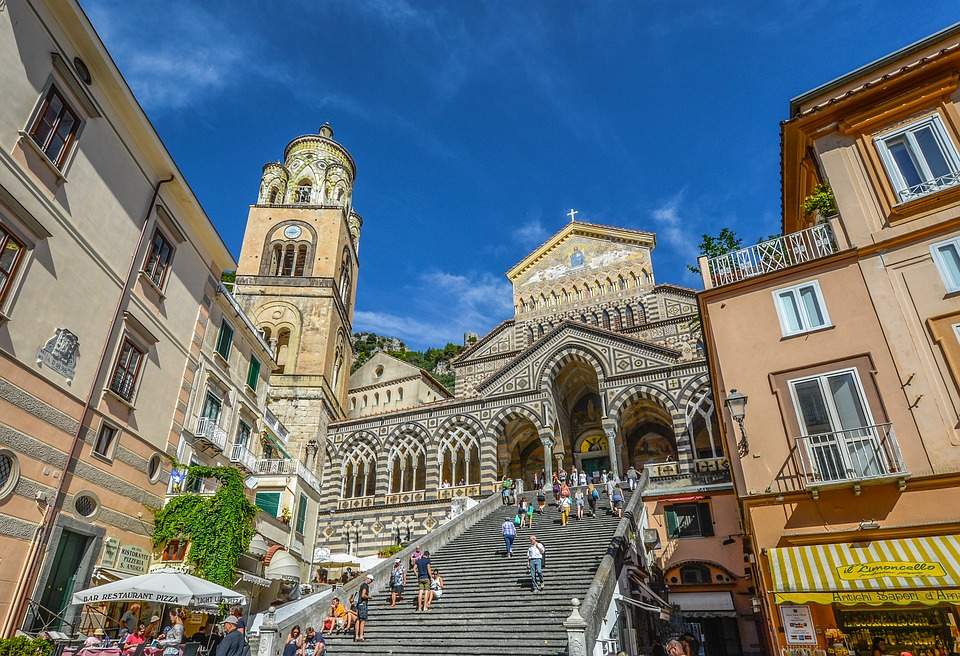

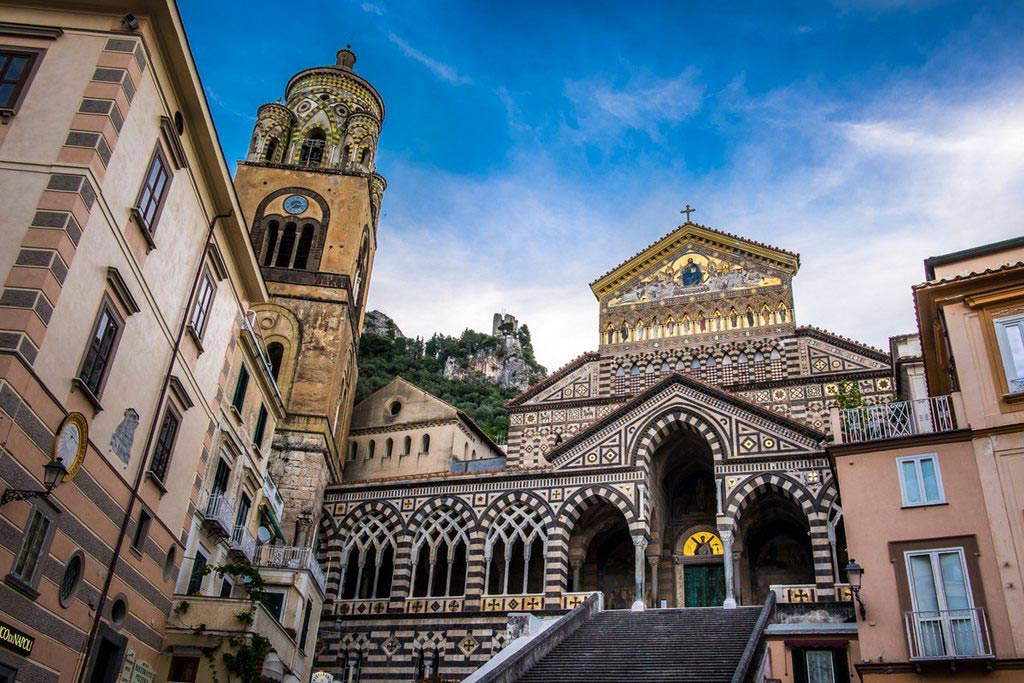

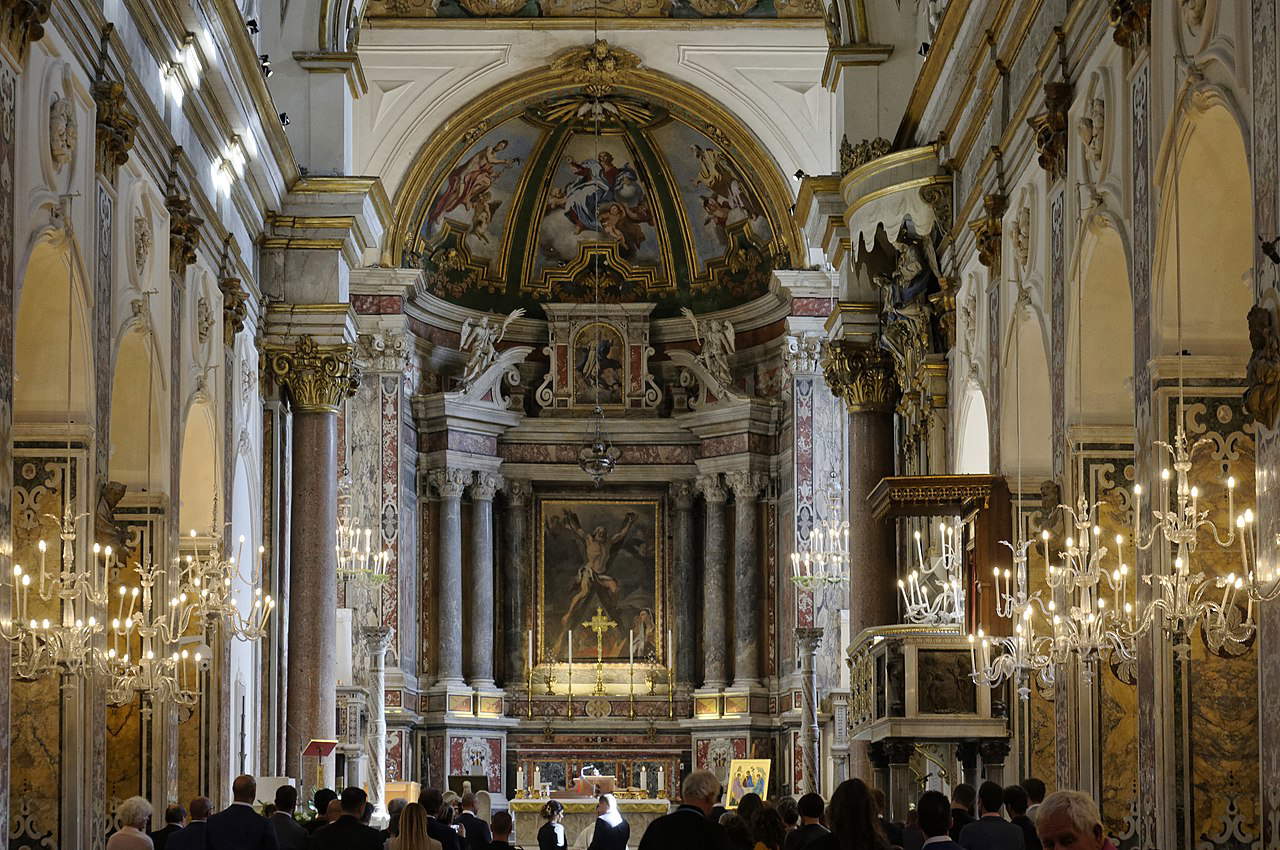

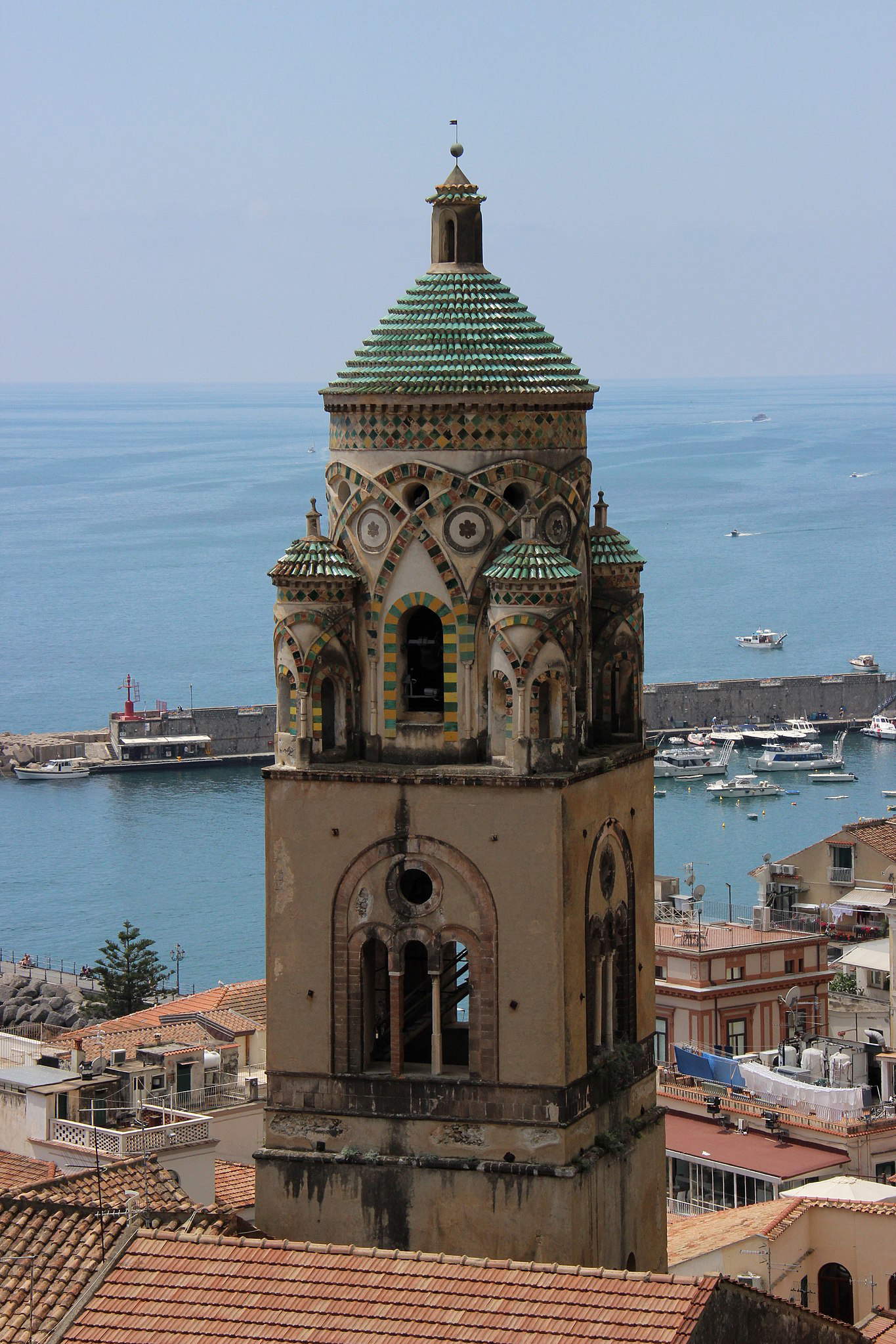

The interior of the basilica of the Crucifix, with a nave and two aisles and no transept, can also be traced back to these same years, while the current single-nave configuration is the product of three significant interventions. The first of these dates back to 1266, the year in which one of the naves of the early Christian basilica was demolished to accommodate the Paradise Cloister: a small cemetery, commissioned by Archbishop Filippo Augustariccio, which was to house the chapels of illustrious Amalfi families. Far more radical was the one following the Tridentine reform, which involved the complete demolition of the right aisle so that the ancient colonnade, which made possible access from the basilica of the Crucifix to the cathedral of St. Andrew, would be incorporated into the new partition wall along which aristocratic chapels were erected. The last intervention began when during 1861 a very strong wind destroyed part of the facade and necessitated heavy renovation. The facade that the traveler finds himself observing today was created by architect Errico Alvino, whose primary intent was to remain as faithful as possible to the style before the collapse, aided by the Amalfi historian Matteo Camera even though at the end of the work the critics of the time evaluated it as an all too free restoration.
The decorations placed on the facade were also rebuilt after the violent collapse, and currently the 19th-century mosaics depicting Christ among the Evangelists by Domenico Morelli can be seen. Since 1931, moreover, a very complex and extremely controversial restoration freed the building from redundant Baroque superstructures, timidly uncovering the primitive medieval wall system. Most important is the bronze door donated to Amalfi by a wealthy merchant, Pantaleone de Comite Maurone, which was cast in Constantinople and on which stand out four silver figures representing Christ, the Virgin, St. Peter and finally St. Andrew, who, according to tradition, was precisely the patron saint of Constantinople, and whose relics were brought and preserved in Amalfi since the 12th century. Amalfi Cathedral has a plan consisting of a transept and apse, and its coffered ceiling tells the story of St. Andrew, as does the Baroque altar cloth depicting his crucifixion. In the sacristy, on the other hand, an 18th-century processional statue of the saint is kept, which is slangily called the “stipo.” In the atrium, just before the entrance to the unusual cathedral, the traveler may find himself distracted by a link leading to the Cloister of Paradise and connecting the ancient basilica and the Romanesque-style bell tower.
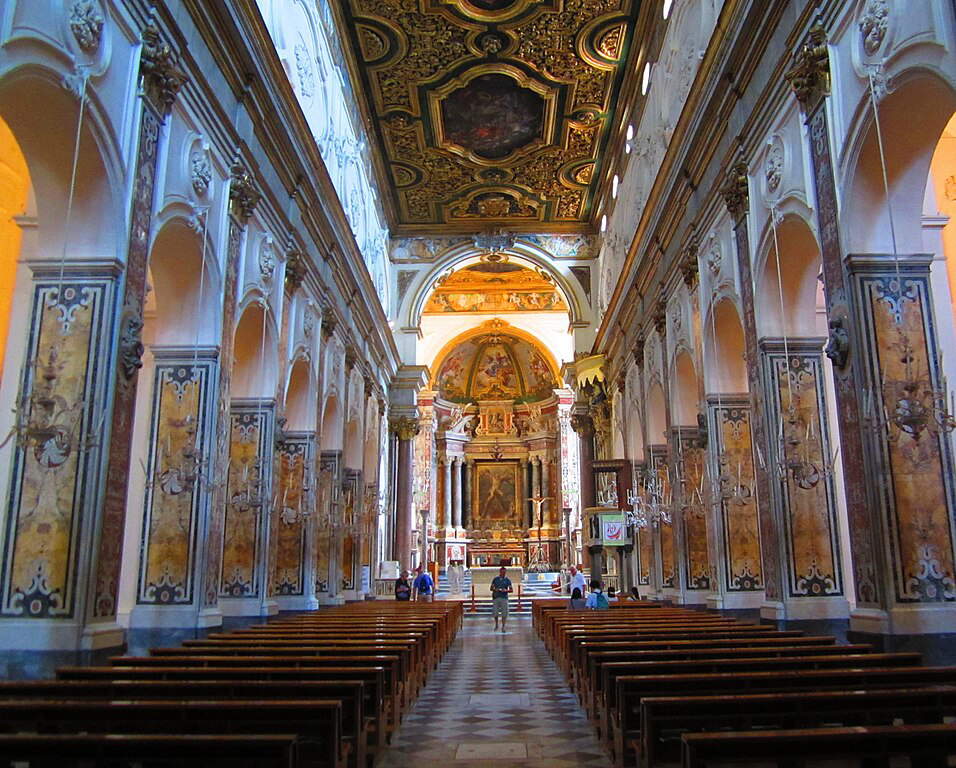

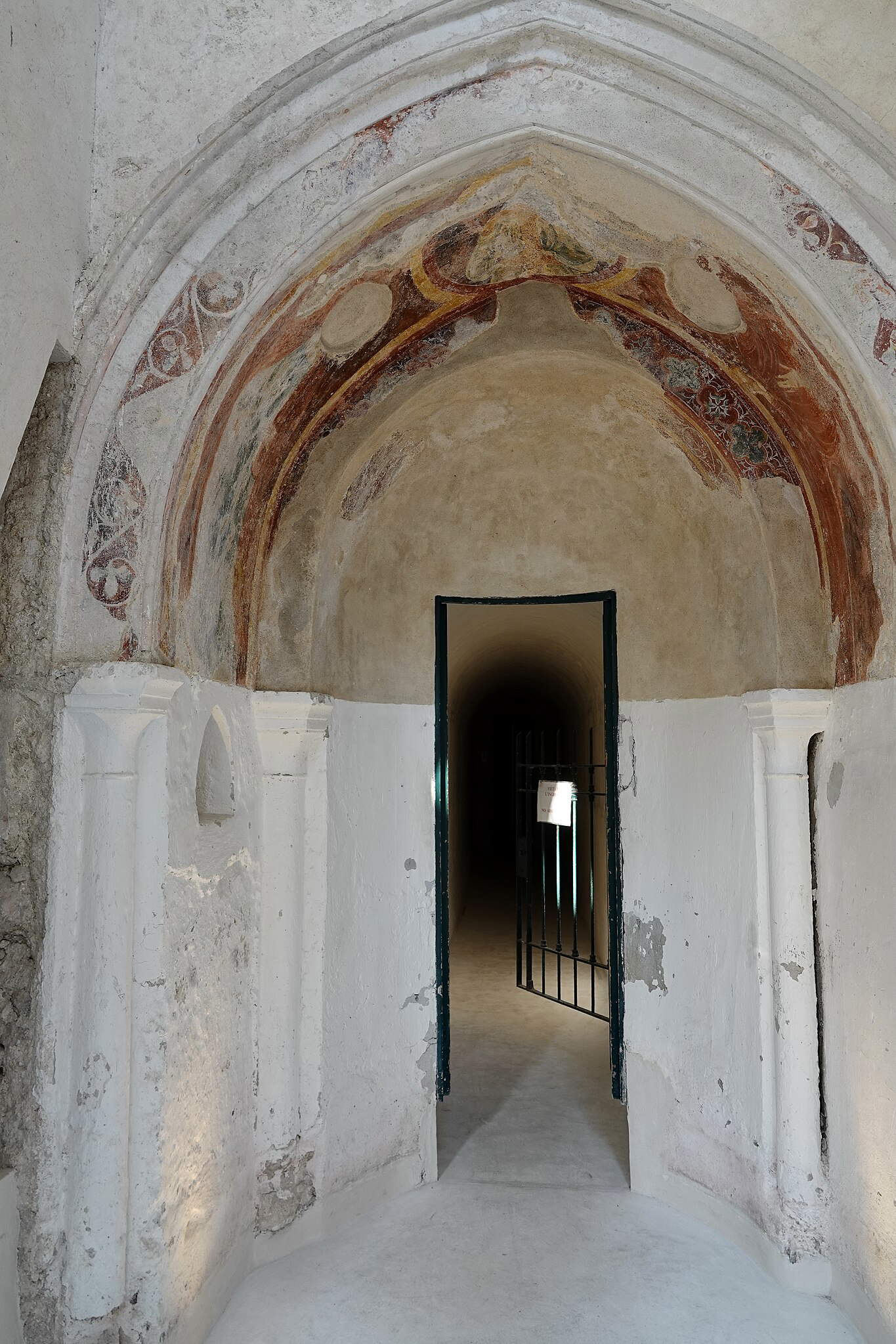
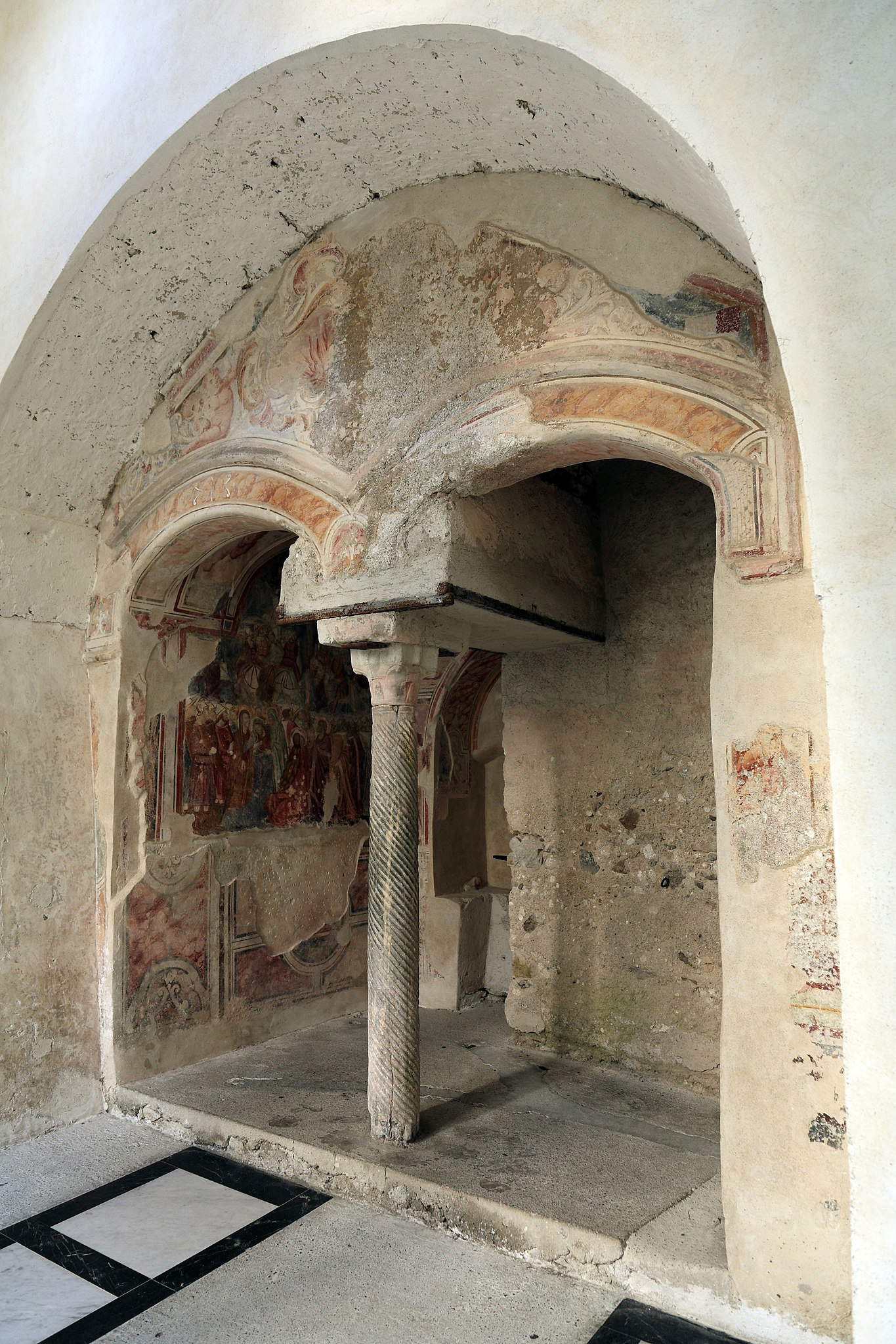


The cloister, built between 1266 and 1268, consists of a four-sided portico with cross vaults, pointed arches, coupled columns and interlaced arches of Moorish influence, while a splendid garden opens in the center. The six frescoed chapels inside, belonging to the noble families of Amalfi, housed their sarcophagi, but today only five remain that narrate different events such as the Rape of Proserpine, Romulus and Remus suckled by the she-wolf, the wedding of Peleus and Thetis, one simply with the Favaro family crest inlaid with “S-shaped” and with Christological images, and finally a fourth-century Roman sarcophagus bearing the name of the decurion Publius Octavius Rufus.
Entering the cathedral one discovers how little remains of the original layout except for a few columns and capitals salvaged from Roman buildings. Walking toward the apse, one can discover three small segmental arches typical of 6th-century Byzantine architecture, which are also found in the chapel of Saints Cosmas and Damian, later transformed into the upper crypt. The crypt of the Amalfi basilica, which today features Baroque forms and rich stucco decorations, was built by Cardinal Pietro Capuano in 1203, who brought the remains of St. Andrew here in 1208.
Even today, despite its endless metamorphoses over time, Amalfi Cathedral dominates, from its striking staircase, the city over which it stands.
Warning: the translation into English of the original Italian article was created using automatic tools. We undertake to review all articles, but we do not guarantee the total absence of inaccuracies in the translation due to the program. You can find the original by clicking on the ITA button. If you find any mistake,please contact us.